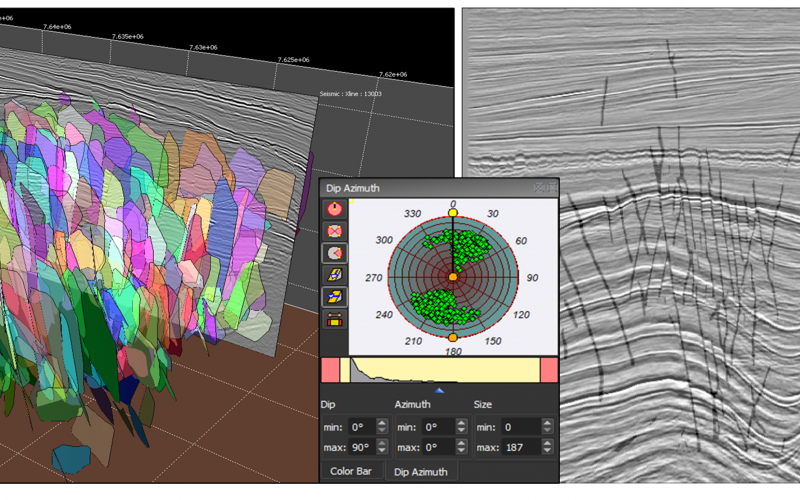
The impact of artificial intelligence on upstream oil and gas activities is accelerating and nowhere more so than in seismic data interpretation, where it is helping to both enhance understanding of sub-surface structures and, just as importantly, dramatically speed up analysis, offering cost as well as time savings.
The potential benefits have spurred several collaborations between upstream companies and data analytics specialists, including a just-announced tie up between Chevron and Paris-based energy industry software designer Eliis SAS. The partnership brings together Chevron's AI models for automated fault detection with Eilis's global methods for advanced seismic interpretation, with the aim of significantly reducing the time needed to perform structural interpretation.
Central to the collaboration is Eliis’s PaleoScan technology, which is designed to provide highly detailed, accurate detection and characterization of geological reservoirs, which the company says are key assets for accelerating E&P workflows and limiting environmental risk. Chevron, for its part, is contributing its advanced AI algorithms for seismic interpretation, subsurface characterization and modelling.
Eliis will integrate Chevron’s algorithms into its seismic interpretation platform, giving customers access to the US oil company’s enhanced interpretation workflows.
“Combining cutting-edge AI technology, developed and tested by Chevron, with the power of automation in PaleoScan, will offer a complete robust solution to the market for advanced seismic and geological interpretation. This could potentially pave the way for a complete automated workflow from seismic to simulation,” Francois Laferriere, Eliis's Chief Revenue Officer, said.
He said solutions like this would also aid carbon sequestration studies, where comprehensive fault interpretation is needed to fully assess a potential storage site's seal integrity and the risk of carbon dioxide escaping to the surface through faults.
Quality control
Laferriere addressed concerns over potential risks associated with integration of the automated AI processes into systems that ultimately need human oversight – a hot topic now in many industries and for the bodies that regulate them.
“In the field of geosciences, Eliis views artificial-intelligence outcomes not as ultimate end-products, but more as enabling technologies that have to be seamlessly integrated into a wider scientific workflow. That includes the ability to perform quality control and refinement to ensure that geoscientists remain in control throughout the entire interpretive process," he said
Other industry players also forging partnerships to improve handling of seismic data include Shell and SparkCognition. The Texas-based data analytics firm said last year Shell would use its AI algorithms to process and analyse seismic data in automated workflows. SparkCognition said the technology generated reliable subsurface images using far fewer seismic shots than traditionally needed, while preserving subsurface image quality.
(Photo: An AI-assisted PaleoScan/Eliis)

